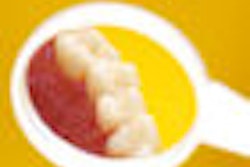
Since the theory of selective polishing was introduced, dental hygienists have been ethically challenged. They are torn between the desire to conserve the fluoride-rich, outermost layer of enamel and patients demanding that their teeth be polished. After all, prior to the existence of the selective polishing concept, an oral prophylaxis always included polishing of the teeth.
Not surprisingly, some patients interpreted the implementation of selective polishing as laziness on the part of the dental hygienist because some or all of their teeth were not being professionally polished. (An important fact that needs highlighted is that, to date, the definition of an oral prophylaxis as defined by the American Dental Hygienists' Association and the American Academy of Periodontology includes polishing.)
For anyone not familiar with selective polishing, the key elements are:
Polishing abrasives have the potential to remove millimicrons of the fluoride-rich enamel that lies in the outermost layer of enamel. Dental plaque and biofilm can be readily removed mechanically without abrasives, such as with a toothbrush and dental floss or other oral hygiene aids without removal of the fluoride-rich enamel layer.
Dental stain does not cause any dental disease. Removal of dental stain is not a therapeutic procedure and patients should be educated and counseled to stop smoking if they have stain due to the use tobacco products. Dental hygienists should "selectively" polish only the teeth that are stained. Teeth with no stain should not be polished, rather plaque should be removed by another method, such as with a toothbrush or other oral hygiene aids.
Selective polishing was based on research published in 1967 (Helvetica Odontologica Acta, April 1967, Vol. 11:1). However, that initial research was a small laboratory study that has since been discounted because there were too many uncontrolled and/or undisclosed variables that affected the outcome. With today's technology, this sort of study would be more highly controlled, and no doubt more research in this area is warranted.
To be certain, patients may present with conditions that would contraindicate dental polishing, including amelogenesis imperfecta, enamel demineralization, enamel hypocalcification, enamel hypoplasia, exposed cementum, and dentinal hypersensitivity.
An easy alternative
There is a simple way to put this dilemma to rest that will make the dental hygienist and patients alike happy: polish with a cleaning agent rather than a polishing agent (Dimensions of Dental Hygiene, November 2009, Vol. 7:11, pp. 18-22). What is the difference? A cleaning agent does not contain abrasive agents, therefore it will not create uneven scratches in enamel or dental restorations. A cleaning agent can be used to "polish" teeth and will not remove any enamel or damage the surface characterization of dental restorations. Cleaning agents have round, flat, nonabrasive particles and do not scratch surface material yet produce a high luster.
The only readily available cleaning agent on the market is ProCare (Young Dental). The main ingredient of ProCare is feldspar, a naturally occurring particle. Polishing agents act by producing scratches in the surface of the tooth or restoration created by the friction between the abrasive particle and the softer tooth or restorative surface. As the polishing process progresses from coarse abrasion to fine abrasion, the scratches are smaller than the wavelength of visible light, which is 0.05 µm (Wilkins EM. Clinical Practice of the Dental Hygienist. 10th ed. Philadelphia, PA: Lippincott Williams & Wilkins; 2009:727-740).
When scratches this small are created, the surface appears smooth and shiny -- the smaller the scratches, the shinier the surface. Many commercially available prophylaxis polishing pastes contain pumice, aluminum oxide, zirconium silicates, and calcium carbonate, among others.
For polishing abrasives to produce the desired effect, the particles must be harder than the surface to be polished. This information can be obtained by turning to one of the many material hardness indices, such as the Mohs hardness value (MHV). This index is simple, with diamonds having an MHV of 10 and talc the lowest, an MHV of 1.
Unlike cleaning particles, abrasive polishing particles must be harder than the surface to be abraded. Some of the common abrasive particles found in prophylaxis polishing pastes -- and their associated MHVs -- are pumice (MHV = 6), aluminum oxide (MHV = 9), and zirconium silicates (MHV = 6).
Feldspar particles have an MHV of 6, and ProCare has calcium carbonate added, which makes it less abrasive. In addition, the feldspar particles have been milled to be flat, which makes it clean rather than abrade.
There you have it! Selective polishing should no longer create an ethical dilemma for dental hygienists. If stain is present, a multitude of commercially available prophylaxis polishing pastes can be used. For teeth that are free from stains, a cleaning agent can be utilized, so patients are happy and so are their hygienists.
Caren M. Barnes is a dental hygienist and a professor in the department of dental hygiene at the University of Nebraska Medical Center College of Dentistry in Lincoln, NE.
Copyright © 2011 DrBicuspid.com



















